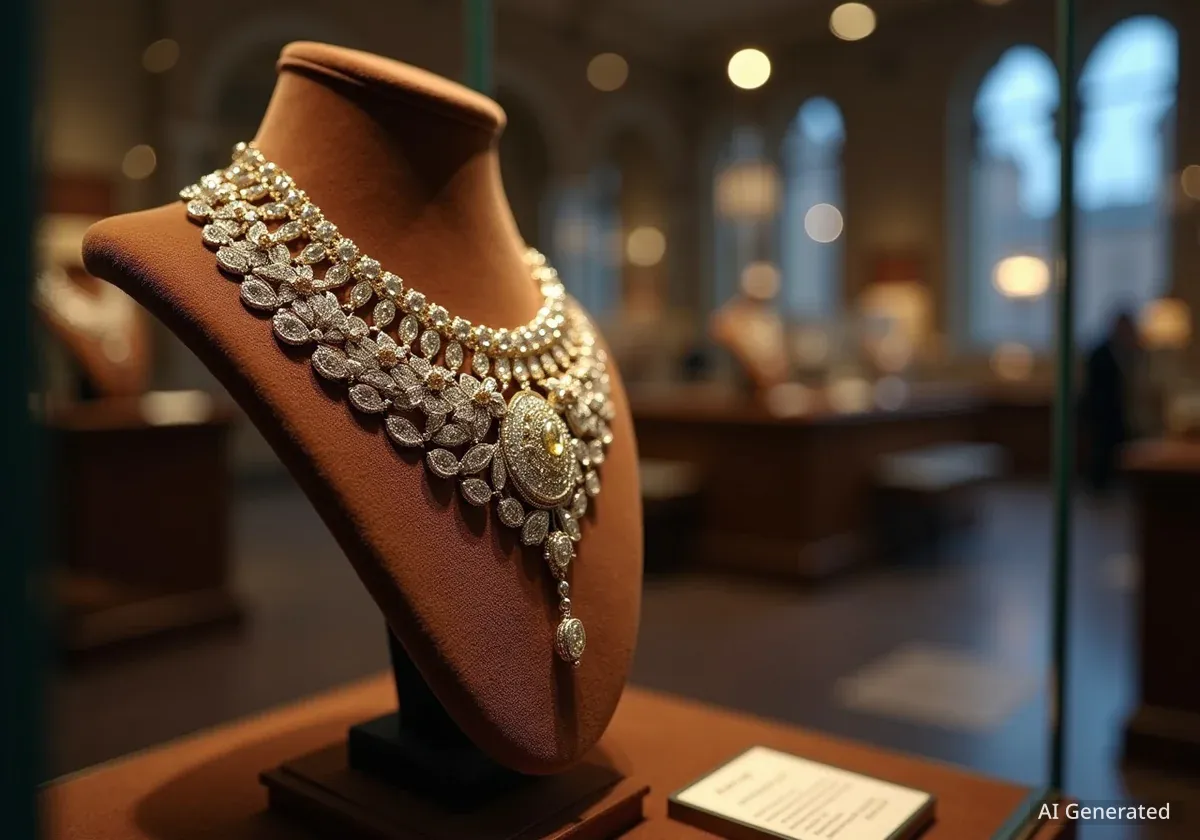The Louvre Museum in Paris has launched a new, unconventional line of gift shop merchandise titled the 'Art of the Heist' collection. The items, which draw inspiration from famous art thefts, have sparked both amusement and significant criticism from the art community and the public.
The collection includes a range of products, from ski masks featuring the Mona Lisa's enigmatic smile to crowbar-shaped souvenir pens. While the museum's marketing department describes the initiative as a 'playful nod to the museum's impenetrable security,' critics are calling it a tone-deaf and inappropriate commercialization of criminal activity that has historically plagued cultural institutions worldwide.
Key Takeaways
- The Louvre Museum has released a new gift shop collection themed around famous art heists.
- Items include Mona Lisa-themed ski masks, grappling hook keychains, and 'getaway van' toy models.
- The collection has generated significant controversy, with art historians and security experts voicing strong disapproval.
- The museum defends the line as a satirical commentary on its own security measures and a way to engage a younger audience.
- Proceeds from the collection are reportedly earmarked for enhancing the museum's security systems, a detail that has not lessened the criticism.
A Bold and Risky Merchandising Strategy
In a move that has surprised many in the museum world, the Louvre's commercial division unveiled the 'Art of the Heist' collection earlier this week. The product line is extensive and leans heavily into the tropes of classic caper films and real-life art thefts that have captured the public imagination.
Visitors to the world-famous museum can now purchase items that many find questionable. The collection features a variety of novelty goods clearly referencing the tools and attire of a stereotypical art thief.
What's in the Collection?
- Mona Lisa Ski Mask: A black balaclava with a print of the Mona Lisa's eyes and smile.
- Crowbar Pen: A functional ballpoint pen shaped like a miniature red crowbar.
- Grappling Hook Keychain: A small, decorative keychain designed to look like a climbing grappling hook.
- Glass Cutter Pizza Wheel: A kitchen utensil designed to resemble a tool for cutting glass.
- 'Empty Frame' T-shirts: Shirts featuring a graphic of an ornate, empty picture frame, referencing stolen masterpieces.
A spokesperson for the Louvre's retail operations, speaking at a press event, framed the collection as an innovative engagement strategy. "We wanted to create something that was both humorous and thought-provoking," stated Jean-Pierre Dubois, head of commercial development. "It's a satirical take on the Hollywood portrayal of art theft. By playfully referencing these clichés, we are actually highlighting the sophistication of our real-world security and the pricelessness of the art we protect."
Immediate Backlash from the Art Community
The reaction from art historians, curators, and security professionals has been overwhelmingly negative. Many view the collection as a trivialization of serious crimes that represent a profound loss of cultural heritage.
"To glorify the act of art theft is a slap in the face to every institution that has ever suffered a loss," said Dr. Hélène Marchal, an art historian and member of the International Council of Museums (ICOM). "These are not victimless crimes. They are thefts from humanity. For the Louvre, of all places, to commercialize this is deeply disappointing and irresponsible."
Security experts have also expressed concern that the merchandise could be seen as making light of the constant threats museums face. The 1911 theft of the Mona Lisa from the Louvre itself is a historical event that remains a sensitive subject, making the new collection particularly jarring for some.
"It's a strange message to send," commented a former head of security for a major European museum who wished to remain anonymous. "On one hand, institutions spend millions on state-of-the-art security. On the other, the Louvre is now selling merchandise that seems to celebrate the very people we're trying to stop. It's a confusing and frankly, a dangerous-looking PR move."
Marketing to a New Generation?
Despite the criticism, the Louvre's marketing team insists the collection is aimed at a younger demographic that appreciates irony and pop culture references. The campaign's internal documents reportedly describe the target audience as "millennials and Gen Z visitors who engage with culture through memes and social media."
A History of Famous Heists
The fascination with art theft is not new. The 1990 robbery at the Isabella Stewart Gardner Museum in Boston, where 13 works of art were stolen, remains the largest single property theft in history. Similarly, the 1911 theft of the Mona Lisa by Louvre employee Vincenzo Peruggia brought the painting international fame. These events, while criminal, have been romanticized in books and films, creating a cultural trope the Louvre now appears to be leveraging.
Social media reactions have been mixed. While some users have praised the collection as 'hilarious' and 'edgy,' a larger number have expressed confusion and outrage. The hashtag #LouvreHeist has been trending on X (formerly Twitter), with many posts criticizing the museum for what they see as a blatant cash grab that undermines its cultural mission.
One popular post read, "So the Louvre, a place that holds priceless treasures of human history, is now selling you a kit to pretend to steal them? 2025 is weird."
The Bottom Line: Commerce vs. Culture
The museum has stated that a portion of the profits from the 'Art of the Heist' collection will be funneled directly back into its security budget. "Every euro spent on a crowbar pen or a getaway van toy directly contributes to the protection of our masterpieces," Dubois explained in his press statement. "We are turning a cultural trope into a funding mechanism for preservation."
However, this justification has done little to quell the controversy. Critics argue that the ethical line has been crossed and that the potential financial gain does not excuse the message the collection sends. They contend that a publicly funded cultural institution has a responsibility to uphold certain values, and glorifying crime is not one of them.
As tourists and art lovers browse the new items in the museum's boutique, the debate continues. The 'Art of the Heist' collection has certainly achieved one of its goals: it has people talking about the Louvre. The question remains whether this is the kind of conversation the revered institution should be starting.





